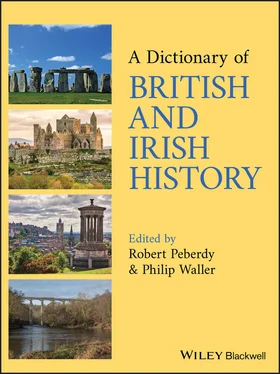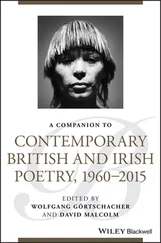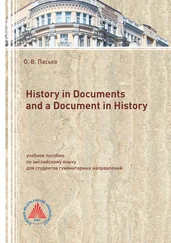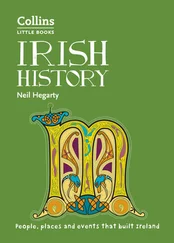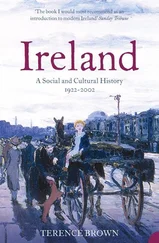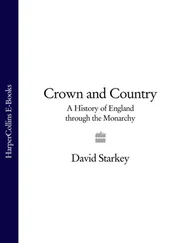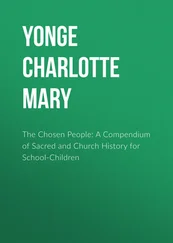BURGESSIn England from the late 11th century, a male inhabitant of a TOWN (from OFr. burgeis, meaning ‘town dweller’), implying the acquisition of liberties (e.g., as a tenement‐holder) and belonging to a town’s community. The term spread to other parts of the British Isles. As TOWN GOVERNMENT changed, the term acquired narrower meanings: either a man who had been admitted to a town’s body of freemen (inhabitants entitled to trade, elect town officers and hold office) or a member of a town’s self‐perpetuating authority (or ‘closed corporation’). (Non‐burgess inhabitants were sometimes called ‘foreigners’.) The term largely disappeared with the reform of town corporations, when authorities became composed of councillors – two‐thirds elected, one‐third aldermen elected by other councillors (Scotland, 1833; England and Wales, 1835; Ireland, 1840). BURGESS, THOMAS(b. 18 Nov. 1756 at Odiham, Hampshire, England; d. 19 Feb. 1837 at Salisbury, Wiltshire, England, aged 80). As bishop of ST DAVIDS 1803–25, Burgess strove to improve the Church of England in Wales. In 1822 he founded St David's College, Lampeter (Cardiganshire), which raised the educational standard of clergy. He also encouraged clergy interested in Welsh literature and supported Welsh cultural societies. He was bishop of Salisbury (England) 1825–37. See also UNIVERSITIES, WALES. BURGH
Term for an urban settlement in Scotland, with privileges of trade and self‐government; the term is derived from OE burh ( see BURH).
The earliest burghs were royal foundations, started by King DAVID I (ruled 1124–53). By 1306 there were 38 royal burghs (many the heads of SHERIFFDOMS and alongside castles), and 18 non‐royal burghs (founded by churchmen or secular lords). From the late 14th century older foundations encouraged a distinction between ‘royal burghs' (including some Church burghs) and ‘burghs of barony', recent or new towns founded by secular lords. Royal burghs managed to establish monopolies of trade in their areas or ‘liberties' and of foreign trade, in return for contributions to taxation. (Baronial burghs monopolized trade only within their boundaries.) Royal burghs co‐ordinated policy, allocated taxation and encouraged uniformity in town government through the Court of the FOUR BURGHS and CONVENTION OF ROYAL BURGHS. Their independent and influential position within the political framework was unique in Europe.
New baronial burghs were founded in the 15th century, and some 270 between 1500 and c .1720, challenging the position of royal burghs; they lost their monopoly of foreign trade in 1672. In the 19th century burghs and populous places lacking burgh status could adopt powers under ‘Police Acts' (1833–67) and be classified as ‘police burghs'.
In 1929 surviving burghs were reorganized into three categories (effective from 1930): cities (ABERDEEN, DUNDEE, EDINBURGH, GLASGOW), large burghs (19), and small burghs (178). Burghs were abolished in 1975. See also TOWN GOVERNMENT, SCOTLAND; TOWN SOCIETY, SCOTLAND.
BURGH, HUBERT DE
(b. c .1170, probably in Norfolk, England; d. May 1243 at Banstead, Surrey, England, aged about 73). In the 1190s de Burgh entered the service of Prince JOHN (king from 1199) and was seneschal of Poitou 1212–15. Having remained loyal during the crisis of 1215, he was appointed CHIEF JUSTICIAR as someone acceptable to John’s opponents (by 25 June).
After John’s death (Oct. 1216), de Burgh supported the accession of HENRY III, a minor, and remained justiciar. From Oct. 1221 he was pre‐eminent in the government, having sidelined Peter des ROCHES. He also married Margaret, sister of ALEXANDER II of Scotland (his second marriage).
After Henry took power (Jan. 1227), he made de Burgh earl of Kent (Feb.) and confirmed the justiciarship for life (1228). But on 29 July 1232 Henry dismissed de Burgh for allegedly inciting anti‐Italian riots. Imprisoned, he later escaped and was pardoned. See also BURGH OR BURKE FAMILY, IRELAND.
BURGHAL HIDAGEName given to a memorandum which lists: (a) 30 BURHS (fortified places), mainly in WESSEX (S England), (b) the HIDES allocated for the maintenance and manning of each burh's defences (due from estates). It probably dates from after 914 (in the reign of EDWARD THE ELDER). The list demonstrates the sophistication of royal government in Anglo‐Saxon England. See also THREE PUBLIC SERVICES. BURGH OR BURKE FAMILY, IRELAND
An Anglo‐Irish noble family, descended from the Englishman William de Burgh (d. 1205) who arrived in Ireland in 1185 (with Prince JOHN) and received land in MUNSTER (S Ireland, 1185) and title to CONNACHT (W Ireland, c .1194). His son Richard (d. 1243) was granted most of Connacht (1227, forfeited 1232–4). Richard's second successor Walter (d. 1271) received the earldom of Ulster in 1263 from the Lord Edward ( see EDWARD I AND IRELAND). His son Richard, the ‘Red Earl' ( c .1259–1326, minor until 1280), was pre‐eminent in Ireland and fought the BRUCE INVASION. Richard's grandson and successor William de Burgh (1312–33) left an heiress who married Lionel, son of King Edward III. Lionel was recognized as earl of Ulster and was later sent to Ireland ( see IRELAND, ENGLISH EXPEDITIONS TO, LATE 14TH CENTURY).
After the murder of William de Burgh (1333), most of his estates in Connacht were retained by kinsmen who established their own landed families. By the mid 15th century Gaelicized Burgh families were predominant in Connacht. Later descendants included the earls of Clanricarde (descendants of Ulick de Burgh, created earl 1543, d. 1544) and the political philosopher Edmund BURKE.
BURGH REFORM ACTSTwo Acts of the UK Parliament, 1833, which reformed town government in Scotland. They followed the first Scottish REFORM ACT (1832) and preceded the MUNICIPAL CORPORATIONS ACT for England and Wales (1835). The Royal Burghs (Scotland) Act instituted elected councils in royal burghs using the burgh franchise introduced in 1832 for parliamentary elections, thus ending ‘closed corporations’ (self‐perpetuating councils). The Parliamentary Burghs (Scotland) Act implemented similar arrangements in newly created parliamentary burghs. See also TOWN GOVERNMENT, SCOTLAND. BURGUNDY, ENGLISH RELATIONS WITH
In the late 14th and 15th centuries the Valois dukes of Burgundy, with lands in France and the Netherlands, were important for England, which had strong economic ties with the Netherlands. There were four dukes: Philip the Bold (duke 1363–1404), John the Fearless (1404–19); Philip the Good (1419–67), Charles the Bold (1467–77). After Charles’s death, the Burgundian lands were contested. Charles’s heiress, Mary, married Maximilian of Austria (1477), and eventually the main northern lands (Artois, Flanders) were annexed to the HABSBURG EMPIRE (1493).
In France, a quarrel from 1404 between John the Fearless and Louis, duke of Orléans, developed into civil war between so‐called ‘Burgundians’ and ‘Armagnacs’ (1410). The dissension facilitated King HENRY V’s invasion of France (1415; see HUNDRED YEARS WAR). After John the Fearless was murdered (1419) by agents of the French dauphin (heir to the king), Philip the Good allied with the English and affirmed the treaty of TROYES (1420). The alliance was strengthened by marriage of Philip’s sister Anne to John, duke of BEDFORD (1423), but endangered when Humphrey, duke of GLOUCESTER, sought lands in the Netherlands claimed by Philip (1424–5). Philip abandoned the alliance in 1435 ( see ARRAS, CONGRESS OF).
In 1468 EDWARD IV of England made a marriage alliance, whereby his sister Margaret of York (1446–1503) married Charles the Bold. Edward and Charles agreed (1474) that Edward would invade France in pursuit of the English claim to the French Crown and cede territory to Charles. Though invasion followed (1475), Edward was bought off by the French king ( see PICQUIGNY, TREATY OF).
Читать дальше
